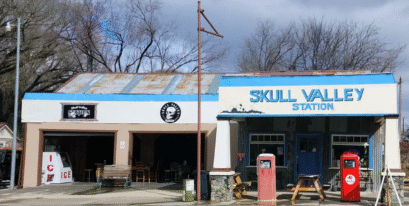Telegrapher Station
The electrical telegraph, or more commonly just telegraph, superseded optical semaphore telegraph systems, thus becoming the first form of electrical telecommunications. In a matter of decades after their creation in the 1830s, electrical telegraph networks permitted people and commerce to transmit messages across both continents and oceans almost instantly, with widespread social and economic impacts. […]
Telegrapher Station Read More »
